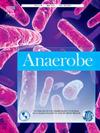In vivo efficacy of fidaxomicin against rpoB mutant Clostridioides difficile infection
IF 2.6
3区 生物学
Q3 MICROBIOLOGY
引用次数: 0
Abstract
Objectives
Clostridioides difficile infection (CDI) is a well-known healthcare-associated diarrheal disease. Fidaxomicin, a key antibiotic used to treat CDI, targets bacterial RNA polymerase. However, some clinical isolates have mutations in rpoB, which reduces their susceptibility to this antibiotic. In this study, the effects of rpoB mutations on the virulence of C. difficile and efficacy of fidaxomicin against CDI were evaluated in vivo.
Methods
An rpoB mutant strain (C. difficile G1073R-2024) with reduced fidaxomicin susceptibility was generated through spontaneous induction in a murine CDI model from the parental strain C. difficile VPI 10463. The virulence and therapeutic responses of the mutant strain were compared with those of the parental strain using a CDI model, including survival rate, body weight changes, clinical scores, and bacterial loads in feces.
Results
C. difficile G1073R-2024 had an amino acid alteration in Gln1073Arg and the minimum inhibitory concentration of fidaxomicin was 128 μg/mL. In vivo virulence was not significantly different between strains. Fidaxomicin treatment resulted in 100 % survival rates and a comparable reduction in the bacterial load for both strains.
Conclusions
Fidaxomicin was effective against CDI caused by the rpoB mutant strain. The emergence of such mutations highlights the need for ongoing surveillance of drug resistance trends in clinical settings.
非达霉素抗rpoB突变株艰难梭菌感染的体内疗效。
目的:艰难梭菌感染(CDI)是一种众所周知的卫生保健相关腹泻疾病。非达索霉素是一种用于治疗CDI的关键抗生素,靶向细菌RNA聚合酶。然而,一些临床分离株有rpoB突变,这降低了它们对这种抗生素的敏感性。本研究在体内评价了rpoB突变对艰难梭菌毒力的影响以及非达霉素抗CDI的疗效。方法:在小鼠CDI模型中,由亲本菌株艰难梭菌VPI 10463自发诱导产生一株非达霉素敏感性降低的rpoB突变株(艰难梭菌G1073R-2024)。采用CDI模型比较突变菌株与亲本菌株的毒力和治疗反应,包括存活率、体重变化、临床评分和粪便细菌载量。结果:艰难梭菌G1073R-2024对Gln1073Arg有氨基酸改变,对非达霉素的最低抑制浓度为128 μg/mL。菌株间体内毒力无显著差异。非达索霉素治疗使两种菌株的存活率达到100%,细菌负荷也相应减少。结论:非达霉素对rpoB突变株所致的CDI有较好的治疗效果。这种突变的出现突出表明需要在临床环境中持续监测耐药趋势。
本文章由计算机程序翻译,如有差异,请以英文原文为准。
求助全文
约1分钟内获得全文
求助全文
来源期刊

Anaerobe
生物-微生物学
CiteScore
5.20
自引率
8.70%
发文量
137
审稿时长
76 days
期刊介绍:
Anaerobe is essential reading for those who wish to remain at the forefront of discoveries relating to life processes of strictly anaerobes. The journal is multi-disciplinary, and provides a unique forum for those investigating anaerobic organisms that cause infections in humans and animals, as well as anaerobes that play roles in microbiomes or environmental processes.
Anaerobe publishes reviews, mini reviews, original research articles, notes and case reports. Relevant topics fall into the broad categories of anaerobes in human and animal diseases, anaerobes in the microbiome, anaerobes in the environment, diagnosis of anaerobes in clinical microbiology laboratories, molecular biology, genetics, pathogenesis, toxins and antibiotic susceptibility of anaerobic bacteria.
 求助内容:
求助内容: 应助结果提醒方式:
应助结果提醒方式:


